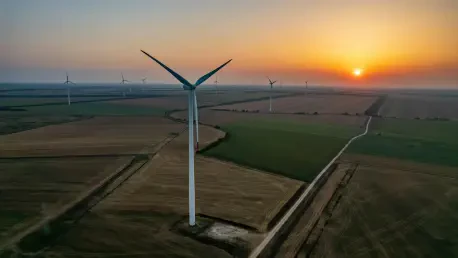In a transformative push toward sustainability, the European Union has committed an impressive €545 million, equivalent to $638 million, to catalyze Africa’s transition to clean energy, addressing a critical challenge where 600 million people on the continent currently lack access to electricity. This substantial funding, targeting nine African nations, aims to revolutionize power infrastructure, enhance rural electrification, and promote renewable energy adoption. Spanning countries from Cameroon to Somalia, the initiative underscores a strategic vision to not only bridge the energy gap but also foster economic growth and environmental resilience. By investing in diverse projects tailored to local needs, the EU is positioning itself as a key partner in shaping a sustainable future for the continent, aligning with global climate objectives. This ambitious endeavor raises intriguing questions about how such international cooperation can redefine energy landscapes and drive long-term prosperity across varied African regions.
Strengthening Energy Infrastructure
High-Voltage Power and Regional Connectivity
A cornerstone of the EU’s funding strategy focuses on bolstering large-scale energy infrastructure to ensure reliable power distribution across borders. In Côte d’Ivoire, a significant allocation of €359.4 million is dedicated to a high-voltage power initiative designed to enhance regional energy connectivity. This project aims to stabilize electricity supply not just within the country but also for neighboring regions, creating a ripple effect of improved access. By modernizing power grids, the initiative seeks to address frequent outages and inefficiencies that have long plagued energy systems in many African nations. Such efforts are critical for supporting industrial growth and urban development, which rely heavily on consistent power. The emphasis on cross-border energy trade also highlights a forward-thinking approach, fostering collaboration among countries to share resources and reduce dependency on fossil fuels, paving the way for a more integrated and sustainable energy network.
Localized Solutions for Rural Access
Beyond large-scale projects, the EU is channeling resources into rural electrification to tackle energy poverty at the grassroots level. Cameroon, for instance, benefits from €59.1 million to bring electricity to remote areas, while Madagascar receives €33.2 million to develop mini-grids tailored for rural communities. These initiatives recognize the unique challenges faced by isolated populations, where traditional grid expansion is often impractical or cost-prohibitive. By prioritizing localized renewable solutions like solar-powered mini-grids, the funding ensures that even the most underserved regions gain access to clean energy. This approach not only improves quality of life through better lighting and communication but also supports small-scale agriculture and local businesses, driving economic activity. The tailored focus on rural needs demonstrates a nuanced understanding of Africa’s diverse energy landscape, balancing immediate access with long-term sustainability goals.
Driving Sustainable Development
Renewable Energy as a Catalyst for Growth
The EU’s investment heavily emphasizes renewable energy sources such as solar, wind, and hydropower to propel Africa toward a greener future. In Lesotho, €25.9 million supports the Renewable Lesotho program, harnessing wind and hydro resources, while Ghana’s €2 million lays the groundwork for a large-scale solar park. These projects are designed to reduce reliance on carbon-intensive energy and align with global efforts to combat climate change. Beyond environmental benefits, the shift to renewables is projected to create up to 38 million green jobs by 2030, offering a dual advantage of ecological and economic progress. Somalia’s €45.5 million allocation for affordable renewable access further illustrates the commitment to inclusive growth. By investing in clean technologies, the initiative aims to transform energy systems into engines of opportunity, empowering communities and fostering resilience against climate impacts.
Economic and Social Transformation
The broader implications of this funding extend far beyond energy access, targeting profound social and economic transformation across the continent. Mozambique’s €13 million allocation, involving private sector partnerships, focuses on a low-emission energy transition, while the Republic of Congo’s €3.5 million expands renewable access to underserved areas. These efforts are poised to stimulate local economies by creating jobs in installation, maintenance, and innovation within the renewable sector. Moreover, improved energy access enhances education and healthcare services, particularly in remote regions, by powering schools and clinics. The EU’s Global Gateway investment plan, as highlighted by European Commission President Ursula von der Leyen, underscores the interconnectedness of Africa’s energy choices with global stability. This strategic vision positions clean energy as a foundation for reducing inequality and building sustainable societies, addressing both immediate needs and future aspirations.
Reflecting on a Unified Vision
Building a Legacy of Cooperation
Looking back, the EU’s $638 million commitment to Africa’s clean energy transition marked a pivotal moment of international collaboration. This multifaceted effort tackled energy disparities with precision, modernizing infrastructure and promoting renewable adoption across nine diverse nations. Each project, from high-voltage grids in Côte d’Ivoire to mini-grids in Madagascar, reflected a deep understanding of local challenges and global climate imperatives. The initiative’s success lay in its ability to balance immediate electrification needs with long-term economic benefits, setting a precedent for how targeted funding could drive systemic change. As a result, millions gained access to power, while the foundation for green job creation was firmly established, reshaping livelihoods and landscapes alike.
Charting the Path Forward
Reflecting on this endeavor, the next steps involve sustaining momentum through continued partnerships and innovation. Expanding the scope to additional countries and integrating emerging technologies like energy storage could amplify impact. Strengthening local capacities for project management and renewable tech development is also essential to ensure enduring benefits. Encouraging further private sector involvement might unlock additional resources, while monitoring and adapting strategies based on real-time outcomes remains crucial. This historic investment laid a robust groundwork, but its true legacy depends on adaptive, inclusive approaches that keep pace with Africa’s evolving energy needs, inspiring a global model for sustainable progress.









